Award-winning set and costume designer Katrina Lindsay discusses her work on the National Theatre’s spectacular adaption of Andrea Levy’s novel

“There are some words that once spoken will split the world in two. There would be the life before you breathed them and then the altered life after they’d been said. They take a long time to find, words like that. They make you hesitate. Choose with care. Hold on to them unspoken for as long as you can just so your world will stay intact.”
― Andrea Levy, Small Island
The words ‘hostile environment’, for thousands of people who called Britain home, split their world in two. Some 5,000 long-term residents from the Caribbean – some of whom were part of the Windrush generation – were ‘mistakenly’ classified as illegal immigrants by the UK Home Office in 2018. Many lost their jobs, their passports, their homes, and in some cases detained and deported to countries they hadn’t visited in decades. Due to media scrutiny the scandal led to much hang-wringing and apology from the government and brought into sharp focus the brutal immigration system established by Theresa May when she was Home Secretary. A year later and many of the lives of those affected remain broken, with none of the legislation introduced by May repealed.
Honest conversations about Great Britain and the many different peoples who made it so has never been more critical. This depressing, shameful episode can trace its tangled roots to the treatment of African and Caribbean people who migrated to the United Kingdom following the second World War, the central focus for the National Theatre’s stunning adaptation of Andrea Levy’s Orange Prize-winning novel, Small Island. Fluidly switching between Jamaica, Britain, memory, dream – the play perfectly captures the grand narrative of love, abandonment and hope in Levy’s book, and opens up a much-needed discussion on that amorphous thing we call British identity. Skilfully adapted by Helen Edmundson, director Rufus Norris together with set and costume designer Katrina Lindsay have created such compelling worlds for the three interconnected stories of Hortense, Gilbert and Queenie, that it’s impossible not to be swept up in the sheer scale and ambition of the show. Hurricanes are evoked through slanted chairs, sweetshops melt into the floor, romance unfurls in front of cinema screens and billowing projections of the HMT Empire Windrush loom large. It is theatre at its most grand, emotive and intimate.
We spoke to Lindsay about the demands of designing the set and costume, translating literature into theatre and why the story is so pertinent to our life and times.
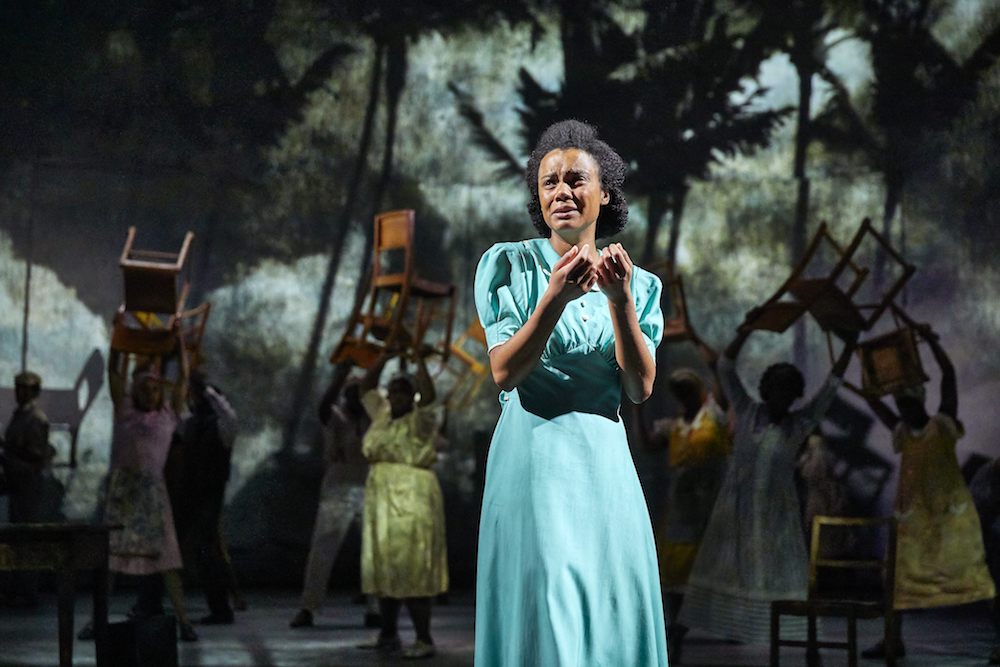
Before the play begins there’s such an interesting mix of mediums on stage – how did you integrate different disciplines throughout?
It felt important that the piece had the scope to evoke epic scale and intimate detail alongside each other in telling the story. It needed to be visually expansive and delicate with the characters aspirations and emotions at the heart of what we were doing on stage. Hortense talks of “The golden life for I” and “In my minds eye” and Michael of “big skies, big opportunities” – these gave me clues that the places needed to be evoked rather than be literal. That the piece was about aspirations, hope and then the harsh reality of a person’s life within a time in history.
The use of film as a medium to create worlds helped with the fluidity we needed from place to place but also it was important that the film images had a painterly quality – suggested, poetic, elemental and felt – rather than just literal in an illustrative sense, although we do play with that also. The film was placed on a delicate crumbling wall which gave everything a sense of scale and history but also looked like it evaporated into air. At other times we contrasted this with film that was projected on a moving monolithic screen as if we were watching something in a cinema or newsreel from the period. There is a very naive sketch I did early on in my sketch book which shows a drawing of all the tools and mediums I felt we needed in telling the story – curved wall, doorframe, film, people, sound – things appearing and disappearing. I knew it would be about how the elements all knitted together and how the moments were edited between each other as a live event that would be the key to grasping the intimate and epic nature of the story and history being told.
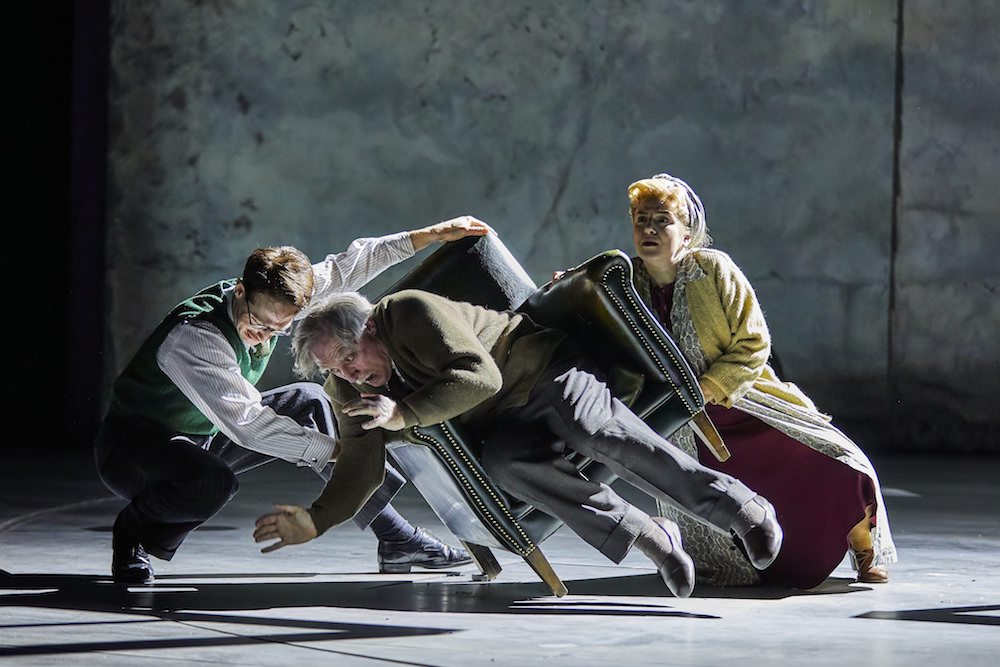
Why is Small Island such an important story to tell now?
It opens up the complex history and heritage of the British Empire, it’s people and therefore the creation of the multi-cultural island we live in today, which is particularly important to explore now. Small Island charts the story of the Windrush generation who were treated like strangers and second-class citizens on arrival to Britain – despite having served in WWII – the fall out of which is still seen today in the recent Windrush scandal. As Britain prepares to leave the European Union it reveals how this small island has relied on many countries and people to make it Great over its time. It voices this part of British history from the perspective of those who saw it as their Mother Country and excavates what it really means to be British today.
What should the best theatre, or theatre design, be capable of?
Telling the story well, clearly and ideally with an emotional core. Progressive and inclusive. I think good design at its heart does in some way engage in the fact that theatre is a live event and has the opportunity of harnessing the audience’s imagination in the story-telling, so the experience of watching is both individual and collective.
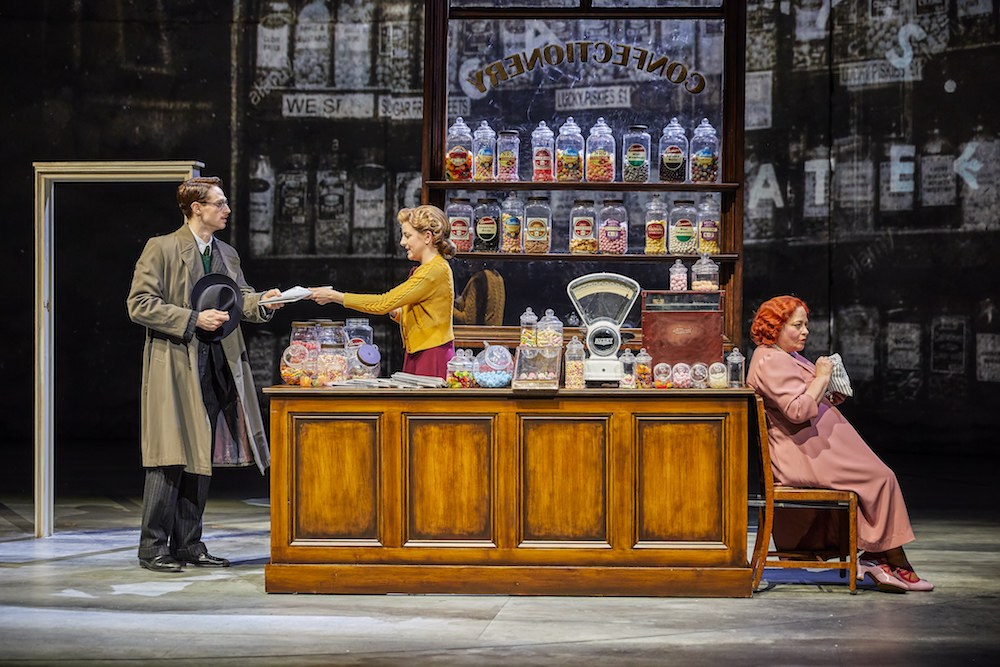
What research did you undertake for the costumes?
I gathered photographic archive images of people from the period and also had a lot of archive film from the West Indies as a source. I think probably the most surprising aspect I discovered was just how “more British than the British” many Caribbean people were at the time. From their RP accents to immaculate dress sense and mores, especially towards Britain. Comparing the images of people dressed from the Caribbean against many of their British counter-parts reveals just how well turned out and immaculate they were in their presentation and style.
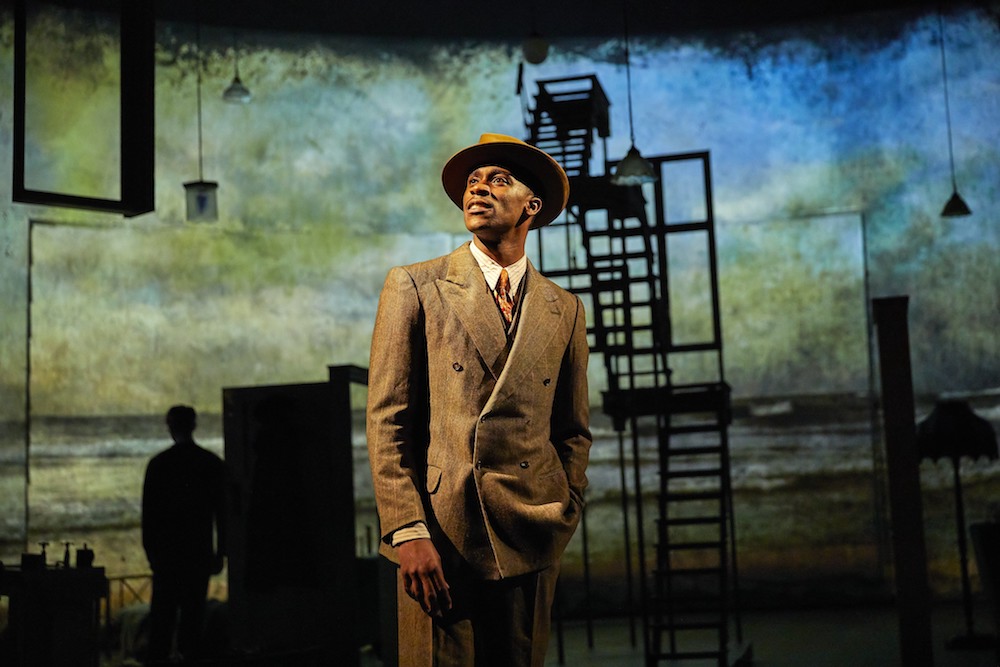
You had to juggle a lot of scene changes (sometimes switching between countries and timelines in seconds). What considerations or challenges did you have as a designer when helping translate a work of literature into theatre?
The challenges were that the storytelling written in the first half was very fast paced and widely contrasted in locations and detail within those places. It needed to be expansive and intimate, so I knew I had to find a very fluid visual language to it all. Then in the second half we were very deliberately in a place that was more real – the house the characters all end up living in – with its attic rooms, stairs, locations outside. I was juggling how to create a space that could give us scope to move quickly and evoke place, whilst feeling grounded in reality later in the second half, but still linked to the visual storytelling of the first half.
Theatre design is always a bit of a juggle between the practical realities of the theatre space the play is being told in, alongside the worlds you are exploring visually for the story. A key ingredient when helping translate a work of literature into theatre visually, is that the piece in some way also sits in the audience’s imagination already from the act of reading. Even if the audience coming to see it haven’t read the piece of literature it is adapted from, there are still many aspects that engage in imagination and detail which help give clues as to what visually may be needed on stage to make the experience of watching it similar in a way to reading. It has an intimacy about it which I think can be tapped into.
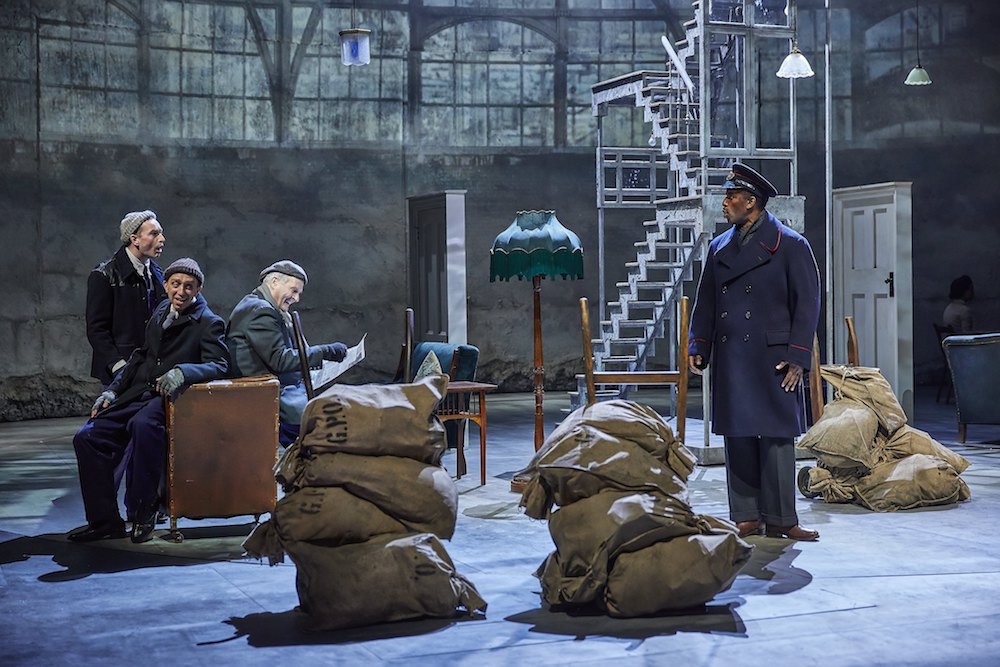
How did you work with the actors in creating such fluid transitions?
Rufus and I worked on the piece with a model before rehearsals began for a few months on and off, working out the movement of the scenes against each other and images and elements of the staging. This gave us the map of how we get through the piece from place to place and the arc of the staging. Then with this as the core within rehearsals, Rufus and Coral (the movement director) worked with the actors on the rhythm of the staging, so they bring to the ideas to life. It is many minds coming together and practicing to get the beats working seamlessly.
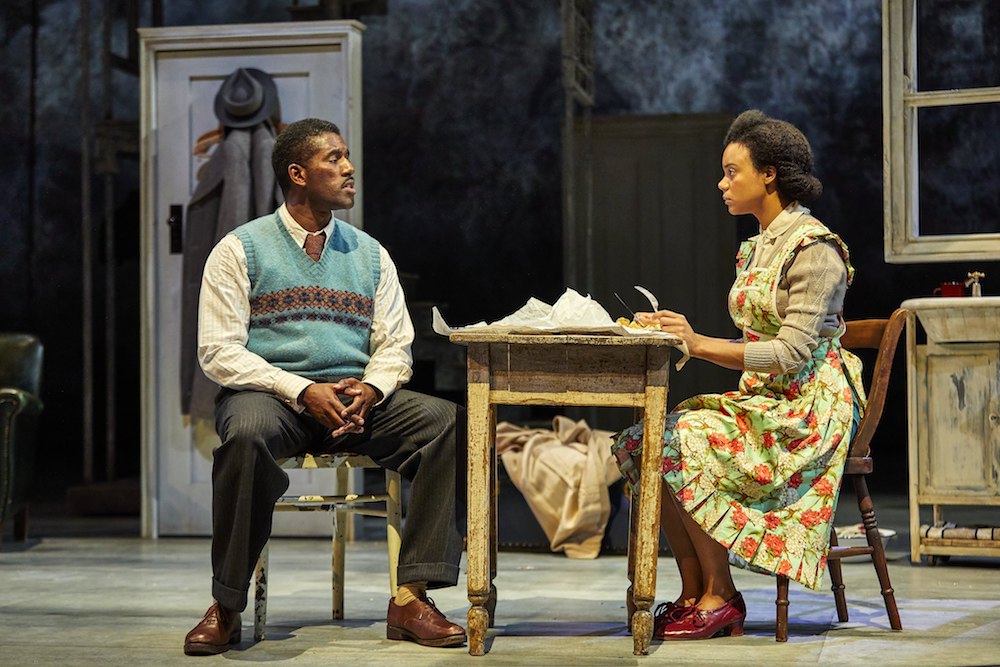
Do you have a favourite moment in the play?
I have a few, but ultimately there is something about the very end moments in the piece – where everything gets taken away and we see the sea of characters we have got to know walk through the space. They line up along the back and connect together in that last moment. I find that moving in a way I don’t always experience, and I think it is the effect of all their histories and connections and shared stories on stage alongside the ghosts of the real archive people throughout the piece who are now no longer here. It captures something about shared humanity for me that I find very emotional.
Small Island runs at the National Theatre until 10th August 2019 and will be broadcast to cinemas via NT Live on 27 June